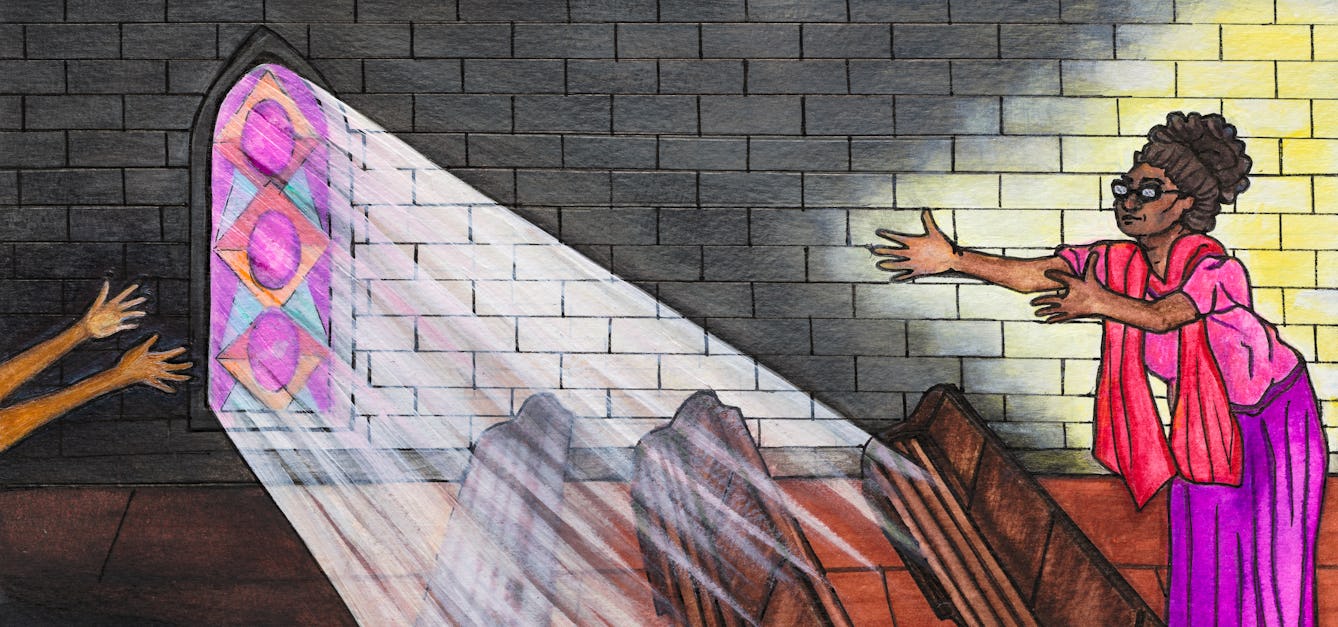Stories

- Article
Meredith Wadman’s prescription for writing
The Wellcome Book Prize shortlisted author of ‘The Vaccine Race’ answers five questions on health, inspiration and storytelling.

- Article
The boundaries that shape my writing
While writing about her life can be enormously helpful, Caroline Butterwick needs to regularly reassess her boundaries. Here she explores the line between what’s public and what’s private, and how porous that can be.

- Photo story
’No you’re not’ – a portrait of autistic women
In this sensitive series of portraits and interviews, photographer Rosie Barnes acknowledges the voices and experiences of autistic women.

- Article
Religion and mental health
At a time of extreme distress, Jamila Pereira found that the faith she had relied on was failing her. Here she describes how she found other ways to begin healing and finding happiness.
Catalogue
- Books
Mustn't grumble... : writing by disabled women / Lois Keith, editor.
Date: 1994- Books
Outspoken women : an anthology of women's writing on sex, 1870-1969 / edited by Lesley A. Hall.
Date: 2005- Books
Mad women in romantic writing / Philip W. Martin.
Martin, Philip W.Date: 1987- Books
Going public : women and publishing in early modern France / edited by Elizabeth C. Goldsmith and Dena Goodman.
Date: 1995- Books
The Madame Curie complex : the hidden history of women in science / Julie des Jardins.
Des Jardins, JulieDate: 2010








![Origanum dictamnus L. Lamiaceae Dittany of Crete, Hop marjoram. Distribution: Crete. Culpeper (1650) writes: ‘... hastens travail [labour] in women, provokes the Terms [menstruation] . See the Leaves.’ Under 'Leaves' he writes: ‘Dictamny, or Dittany of Creet, ... brings away dead children, hastens womens travail, brings away the afterbirth, the very smell of it drives away venomous beasts, so deadly an enemy is it to poison, it’s an admirable remedy against wounds and Gunshot, wounds made with poisoned weapons, draws out splinters, broken bones etc. They say the goats and deers in Creet, being wounded with arrows, eat this herb, which makes the arrows fall out of themselves.' Dioscorides’ Materia Medica (c. 100 AD, trans. Beck, 2005), Pliny the Elder’s Natural History and Theophrastus’s Enquiry into Plants all have this information, as does Vergil’s Aeneid where he recounts how Venus produced it when her son, Aeneas, had received a deadly wound from an arrow, which fell out on its own when the wound was washed with it (Jashemski, 1999). Dioscorides attributes the same property to ‘Tragium’ or ‘Tragion’ which is probably Hypericum hircinum (a St. John’s Wort): ‘Tragium grows in Crete only ... the leaves and the seed and the tear, being laid on with wine doe draw out arrow heads and splinteres and all things fastened within ... They say also that ye wild goats having been shot, and then feeding upon this herb doe cast out ye arrows.’ . It has hairy leaves, in common with many 'vulnaries', and its alleged ability to heal probably has its origin in the ability of platelets to coagulate more easily on the hairs (in the same way that cotton wool is applied to a shaving cut to hasten clotting). Photographed in the Medicinal Garden of the Royal College of Physicians, London.](https://iiif.wellcomecollection.org/image/B0009085/full/282%2C/0/default.jpg)
